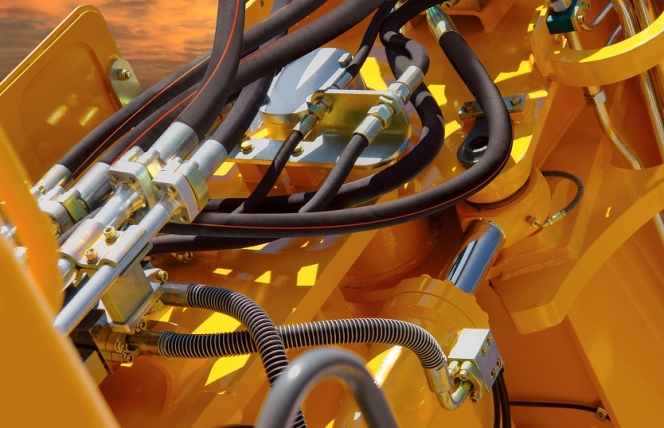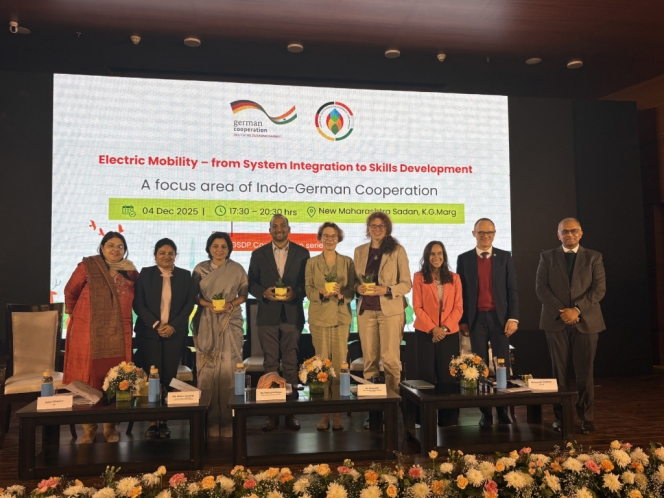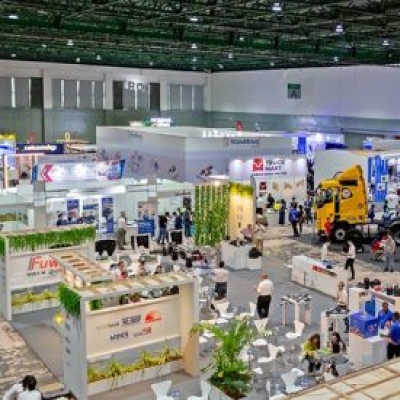- Budget 2025
- post budget reaction
- auto industry
- EV
- leaders
- manufacturing sector
- automotive
- production
- engineering
- mechanical
- electrical
- electronics
Union Budget 2025-26: A Game-Changer for Electric Mobility, Start-ups And MSMEs
- By Gaurav Nandi
- February 04, 2025

The Union Budget 2025-26 has been widely welcomed by industry leaders, particularly for its transformative impact on the electric mobility and start-up ecosystems. Key highlights include the exemption of basic customs duty (BCD) on 35 capital goods critical for EV battery manufacturing and tax exemptions on essential materials like lithium and cobalt, significantly lowering production costs and promoting local supply chains.
The budget also emphasised boosting the MSME sector through increased credit access and skill development, alongside measures supporting startups, gig workers and cleantech manufacturing. Investments in infrastructure, public-private partnerships and tax relief for the middle class are expected to stimulate consumer spending and economic growth.
Overall, the budget is seen as a strong step toward making India a global leader in sustainable mobility, innovation and self-reliant manufacturing.
Partner and Automotive Tax Leader at EY India Saurabh Agarwal noted, “The proposed income tax cuts could boost the middle class's spending power, potentially increasing demand for two-wheelers, three-wheelers, and small cars. Further, the government's commitment to fostering a sustainable automotive ecosystem is clearly demonstrated through its strategic initiatives, which are poised to deliver substantial benefits to the EV industry. The budget astutely emphasizes the complete exemption of Basic Customs Duty (BCD) on cobalt powder and waste, scrap of lithium-ion battery, lead, zinc, zirconium, copper, etc. These pivotal measures are designed to ensure a reliable domestic supply of essential critical minerals for manufacturing and to stimulate job creation across India.”
The Central Government has significantly increased budgetary allocations with PME E-Drive receiving INR 40 billion, auto PLI being bolstered by INR 22.18 billion and advanced chemistry cell PLI benefiting from an infusion of INR 1.55 billion.
Commenting on the newly introduced budget, Mercedes-Benz India Managing Director Santosh Iyer said, “India has long been regarded as a niche garden with high fences; however, this budget is expected not only to enrich the garden by stimulating consumption and strengthening MSME sector, but also lowering the fences through tariff rationalisation and adoption of international practices on transfer pricing, with a clear commitment to enhanced global trade integration. This will send a strong positive signal to the industry, reinforcing confidence in the ‘India Growth Story’, paving the way for sustained investment and future expansion. The announcement of setting up of National Manufacturing Mission’s for clean technology manufacturing and support to domestic EV battery manufacturing is a positive step towards strengthening EV ecosystem. We also welcome the setting up of a high-level committee to evaluate regulatory reforms which will enhance ease of doing business in long term.”
Volkswagen India Brand Director Ashish Gupta, averred, “The Union Budget presents a forward-thinking roadmap for strengthening India’s manufacturing ecosystem with a clear emphasis on clean technology, skill development and infrastructure growth. By prioritizing these areas, along with manufacturing, India is advancing toward a circular economy—where investments, innovation, and sustainable practices drive long-term growth. Infrastructure growth through public-private partnerships and capital expenditure incentives will pave the way for India to become a globally competitive manufacturing hub.”
Commercial vehicle players have also lauded the budget. Ashok Leyland Executive Chairman Dheeraj Hinduja noted, “The finance minister has presented a clear, growth-driven budget that aligns with the Prime Minister’s vision of fostering a competitive and resilient India with inclusive growth by investing in people, economy and innovation. Additionally, the government's strong commitment to green mobility is expected to create new avenues for innovation and growth across the country.”
Daimler India Commercial Vehicles Managing Director Satyakam Arya iterated, “The Union Budget 2025-26 will be a game changer for India and the mobility sector, helping us become a global leader in EV manufacturing and sustainable transportation. The emphasis on localising battery production will create technological advancements and generate more jobs. Also, with mining identified as one of the six domain areas for transformative reforms and the introduction of the State Mining Index, we see major growth potential for the sector in the coming years.”
EKA Mobility Chairman Sudhir Mehta said, “These different programmes demonstrate a strong commitment to sustainability, innovation and greater industrial competitiveness, setting the framework for transformative progress in a variety of critical sectors. The nation's energy revolution will be dependent on funding for small modular reactors and the government's target of 100 gigawatts of nuclear power by 2047. Long-term growth can be solidified by financial agreements that allow governments to expand their borrowing capacity, as well as indirect taxation initiatives targeted at increasing domestic value creation.”
Two-wheeler industry
In a move to avoid protectionist signals, the government has reduced import duties on high-end motorcycles. This decision aligns with India's commitment to lowering trade barriers and could influence the premium motorcycle segment.
With electric mobility remaining the focus point of the automotive sector, the budget has made pivotal efforts for bolstering manufacturing. Drawing on that, companies operating in the EV two-wheeler space has welcomed the developments with open arms.
Kolkata-based Motovolt Mobility Founder Tushar Choudhary said, “"The recent budget has delivered a promising outlook for India’s electric vehicle industry, especially with the reduction in BCD on capital goods related to EV manufacturing. This move will help lower production costs, making EVs more affordable for consumers and encouraging higher sales. Aligned with the National Manufacturing Mission, the budget’s focus on rationalising customs tariffs signals the government's intent to localize high-value production and reduce dependency on imports. Additionally, the exemption on critical minerals like lithium is a significant step toward easing the supply of vital components for EV batteries, further lowering costs and boosting domestic manufacturing. Efforts to localize EV components like batteries, motors and controllers will help reduce upfront costs which would further strengthen India’s EV Ecosystem giving the EV sector the ability to penetrate the Indian markets.”
Chennai-based high performance EV two-wheeler manufacturer Raptee HV’s Co-founder Dinesh Arjun said, “The Finance Minister’s focus on nurturing and investing in innovation is a commendable step toward accelerating new technologies that will shape our future. The allocation of a Deep Tech Fund will further strengthen India’s industrial ecosystem, fostering a globally competitive, tech-driven economy.”
Drawing on the same lines, Revamp Moto Chief Executive Officer Pritesh Mahajan said, “"The National Manufacturing Mission’s support for clean tech manufacturing is a game-changer for India's sustainable future. I firmly believe that this initiative will accelerate the growth of domestic EV battery and solar panel production, reducing our reliance on imports while strengthening India's position as a global leader in green technology. The additional INR 100 billion investment underscores the government’s commitment to fostering innovation, job creation and energy security.”
Welcoming the budget, Odysse Electric Founder Nemin Vora said, “We appreciate the Union Budget 2025, which underscores the government's commitment to fostering economic growth and empowering citizens. The adoption of progressive policies, particularly within the existing tax framework, is a key step in enhancing disposable income and driving consumer spending. This decision will significantly impact consumer-driven sectors, especially the two-wheeler industry. With more disposable income in the hands of consumers—particularly the middle class—purchasing power is set to rise. As a result, more individuals will be encouraged to invest in personal mobility solutions like two-wheelers.”
Associates talk
The boost towards electric mobility is also poised to impact the entire ecosystem. DriveX Founder Narain Karthikeyan noted, “The 2025 Budget is a strong step towards inclusive economic growth, bringing significant benefits across all sections of society. The increase in MSME turnover limits, along with enhanced credit access and intensive skill-development programmes will fuel entrepreneurship, business expansion and youth employment. We also welcome the government’s recognition of the gig economy, with steps to regularise support for gig workers and improve their access to credit facilities. With enhanced credit guarantee cover for MSMEs and startups, particularly in focus sectors crucial for Atmanirbhar Bharat, the budget lays a strong foundation for sustained growth and economic resilience.”
Commenting on the same lines, Taabi Mobility Limited Chief Executive Officer Pali Tripathi said, “The transformation of India Post into a large-scale logistics network, along with greater accessibility to PM Gati Shakti data for the private sector, will significantly enhance connectivity, particularly in hinterland regions. These initiatives will drive smarter freight management, optimise last-mile delivery, and make transportation more seamless and sustainable.”
On the aggregator front Rapido Chief Financial Officer Vivek Krishna said, “The Union Budget 2025-26 has proposed a review of both financial and non-financial sector regulations that are expected to help businesses perform better with lesser compliances. It reflects a bold vision for Viksit Bharat, one that empowers the gig economy, promotes sustainable mobility, and catalyses digital innovation. We welcome the social security scheme and healthcare support announced for gig workers. The e-shram portal registration and the PM Jan Arogya Yojana will be a game-changer in prioritising the well-being of gig workers, including our captains. It’s also encouraging to see the government’s effort in promoting green mobility by incentivising local EV component manufacturing.”
Alluding to how the manufacturing push will bolster the electric mobility segment, Kinetic Engineering Managing Director Ajinkya Firodia said, “These steps noted in budget will significantly enhance India’s position as a global hub for electric mobility and clean energy technologies. In addition, the focus on expanding charging infrastructure, incentivising electric buses for public transport and ramping up domestic battery production marks a decisive move in India’s EV revolution. The continued subsidies under the FAME scheme will make EVs more affordable and accessible to consumers. This strong policy push not only paves the way for rapid adoption of EVs but will also create jobs, reduce dependence on fossil fuels and position India as a global leader in sustainable transportation.”
Drawing on the same lines, Tata Technologies Managing Director Warren Harris said, “The establishment of five National Centres of Excellence for Skilling is a pivotal move in building a future-ready workforce. This initiative resonates with our commitment to engineering a better future for India's youth through investment in in-demand training programs across Industry 4.0, IoT, and advanced manufacturing and collaborating with state governments to upgrade ITIs into technology hubs.”
TapFin Co-founder Aditya Singh said, “The budget’s emphasis on cleantech manufacturing, including incentives for electric vehicle batteries and the additional 10 GW support for grid-scale batteries, signals a significant shift for India’s electric mobility sector. Strengthening domestic production will foster innovation, reduce dependence on imports, and open new growth opportunities.”
Image for representative purpose only
- BP
- Meg O'Neill
- Murray Auchincloss
- Carol Howle
- Woodside Energy
- BHP Petroleum International
- ExxonMobil
- Albert Manifold
BP Appoints Meg O’Neill As New Chief Executive Officer
- By MT Bureau
- December 19, 2025

British energy major BP has announced that it’s Board has appointed Meg O’Neill as the company’s next Chief Executive Officer (CEO), effective 1 April 2026.
She will succeed Murray Auchincloss, who has stepped down from his position as CEO and director of the board, effective 18 December 2025. Carol Howle, currently Executive Vice-President for supply, trading and shipping, will serve as interim CEO until O’Neill joins the company. Auchincloss will remain in an advisory role until December 2026 to assist with the transition.
At present, O’Neill is the current CEO of Woodside Energy, a position she has held since 2021. During her tenure, she managed the acquisition of BHP Petroleum International. Prior to joining Woodside in 2018, she spent 23 years at ExxonMobil in technical and operational roles.
Albert Manifold, Chair of BP, said, “We are delighted to welcome Meg O’Neill to the BP team. Her proven track record of driving transformation, growth, and disciplined capital allocation makes her the right leader for bp. Her relentless focus on business improvement and financial discipline gives us high confidence in her ability to shape this great company for its next phase of growth and pursue significant strategic and financial opportunities.”
“Following a comprehensive succession planning process, the Board believes this transition creates an opportunity to accelerate our strategic vision to become a simpler, leaner, and more profitable company. Progress has been made in recent years, but increased rigor and diligence are required to make the necessary transformative changes to maximise value for our shareholders,” added Manifold.
Meg O’Neill, said, “BP plays a critical role in delivering energy to customers around the world. I am honoured to serve as the company’s next CEO. With an extraordinary portfolio of assets, BP has significant potential to reestablish market leadership and grow shareholder value. I look forward to working with the BP leadership team and colleagues worldwide to accelerate performance, advance safety, drive innovation and sustainability and do our part to meet the world’s energy needs.”
Murray Auchincloss, noted, “After more than three decades with BP, now is the right time to hand the reins to a new leader. When Albert became Chair, I expressed my openness to step down were an appropriate leader identified who could accelerate delivery of BP’S strategy. I am confident that BP is now well positioned for significant growth and I look forward to watching the company’s future progress and success under Meg’s leadership.”
The board confirmed that Howle’s appointment ensures continuity, citing her 25-year history with the firm.
ContiTech Launches Reduced Dimension Spiral Hydraulic Hose Series For APAC Region
- By MT Bureau
- December 18, 2025

ContiTech, a Continental group sector, has officially introduced its new Reduced Dimension Spiral hydraulic hose series to the Asia-Pacific market. Designed specifically for construction, agricultural and mining machinery, this series aims to improve equipment efficiency through high-pressure capability, flexibility, a lightweight build and extended service life.
The hose incorporates a four- to six-layer spiral of high-tensile steel wire and an optimised synthetic rubber inner tube. This construction yields a more compact and lighter hose with a tighter bending radius, allowing for easier installation in space-constrained machinery like excavators and loaders. The reduction in weight and size contributes to lower system load and energy consumption while also simplifying logistics, installation and maintenance for improved efficiency across the value chain.
Engineered for extreme conditions, the series operates reliably in temperatures ranging from –40°C to +120°C. It maintains flexibility in deep cold and provides strong resistance to oil and swelling at high temperatures. A durable inner tube and weather-resistant cover ensure consistent performance in demanding settings, from arctic mines to high-temperature industrial plants, minimising environmental stress and the need for frequent maintenance.
The product line spans working pressures from 4,100 to 6,100 psi, complies with ISO 18752 CC class standards and carries MSHA flame-resistance certification, adhering to a 4:1 safety factor. This multi-pressure design allows equipment manufacturers to consolidate hose variants, simplifying inventory management, reducing storage costs and maintaining safety across diverse high-pressure uses. Standardisation further streamlines customer processes in assembly, procurement and upkeep.
Tailored for the Asia-Pacific region, the SRDS version features a reinforced synthetic rubber cover that excels in repeat bending applications. Its compound resists surface cracking in tough conditions, including low temperatures, offering a reliable and cost-effective solution. For more severe environments, the XRDS series includes an abrasion-resistant cover for enhanced protection against impacts, friction, and wear in mining, construction, and forestry, thereby extending service life and reducing downtime.
Aligning with its customer-focused approach, ContiTech applies its expertise in high-performance materials and manufacturing to provide safe, efficient and sustainable solutions. The company collaborates with industry partners to advance reliability, efficiency and sustainability across the construction sector.
Xin Song, Head of Mobile Industrial Solutions, Industrial Solutions APAC, ContiTech, said, “The construction, agriculture and mining industries are rapidly transforming towards greater reliability, lower emissions and smarter equipment systems. Leveraging over 150 years of materials expertise, ContiTech develops customer-centric solutions. The Reduced Dimension Spiral series was engineered with deep insights into industry challenges, delivering breakthroughs in lightweight design, space efficiency and extreme-environment adaptability while maintaining constant high-pressure performance. It helps customers reduce equipment load, improve energy efficiency and maximise value across the full equipment lifecycle.”
Vingroup Announces $3 Billion Multi-Sector Investment In Telangana
- By MT Bureau
- December 09, 2025
Vietnam’s Vingroup has signed a strategic memorandum of understanding (MoU) with the Government of Telangana, outlining a comprehensive plan to develop a multi-sector ecosystem through a proposed phased investment of USD 3 billion. This expansive collaboration aims to drive socio-economic growth in the Indian state through major initiatives in smart urban development, electric mobility, healthcare, education, tourism and renewable energy.
The partnership’s most ambitious component is the planned creation of a large-scale smart city. This new urban area, designed to accommodate approximately 200,000 residents, will integrate sustainable planning principles with international-standard amenities and is expected to generate significant local employment. Supporting this community, Vingroup will develop essential social infrastructure, including international-grade multi-specialty hospitals and an integrated K-12 school system.
A key pillar of the initiative is establishing a sustainable electric mobility ecosystem. This involves launching India's first large-scale electric taxi service within Telangana, supported by a widespread network of charging stations. To ensure a green power supply for this fleet, urban areas and industrial zones, Vingroup further proposes to develop a substantial solar farm. The collaboration will also enhance Telangana’s tourism appeal through a dedicated complex featuring theme parks and wildlife attractions.
The Telangana government has committed to supporting these projects by facilitating land allocation, assisting with master planning and administrative procedures and mobilising the necessary connecting infrastructure. This foundational agreement not only marks a significant step in Vingroup’s international expansion but also strengthens economic and business ties between Vietnam and India, creating a framework for future cooperation and mutual growth.
A Revanth Reddy, Hon’ble Chief Minister, Government of Telangana, said, “The USD 3 billion investment by Vingroup is a massive vote of confidence in the ‘Telangana Rising’ vision, particularly our focus on sustainable urban development and green infrastructure. This is more than capital; it’s a partnership to build a futuristic, net-zero city and introduce India’s first large-scale electric taxi fleet, directly improving the quality of life for our citizens. Our government guarantees accelerated execution to ensure this global vision becomes a local reality.”
D Sridhar Babu, Hon'ble Industries Minister, Government of Telangana, said, "Vingroup's multi-sectoral commitment, spanning smart cities, solar power and advanced social infrastructure like hospitals and schools, demonstrates the stability and breadth of Telangana’s industrial policy. We are committed to translating this significant capital inflow into local opportunity, positioning Telangana as the gateway for Vietnamese and South-East Asian investment into India's fastest-growing economy."
Sanjay Kumar, IAS, Special Chief Secretary to the Government, Government of Telangana, said, “We welcome Vingroup’s presence in Telangana and recognise the achievements the Group has made in Vietnam, particularly in urban development, green infrastructure and electrified transportation. With the Group’s extensive expertise and capability to execute large-scale projects, we believe that this cooperation will mark an important step forward in shaping a modern and sustainable urban landscape and improving the quality of life for the people of Telangana.”
Pham Sanh Chau, CEO of Vingroup Asia and VinFast Asia, said, “Vingroup sees tremendous potential in Telangana and we aspire to build a long-term partnership with the state government. With our proven track record in delivering mega urban developments, large-scale infrastructure and a comprehensive electric mobility ecosystem, we believe that our collaboration with Telangana will generate tangible value, promote sustainable development and enhance the quality of life for local residents.”
- Indo-German Partnership for Green and Sustainable Development Goal
- Christine Toetzke
- Federal Ministry for Economic Cooperation and Development
India And Germany Discuss Electric Mobility Ecosystem Transformation
- By MT Bureau
- December 05, 2025

India and Germany convened a high-level roundtable under the Indo-German Partnership for Green and Sustainable Development (GSDP) to discuss solutions for advancing electric mobility ecosystems. The ninth edition of the GSDP Conversation Series focused on ‘Electric Mobility: From System Integration to Skills Development’.
The roundtable brought together senior officials from key central ministries, state and city administrations, public transport undertakings, distribution companies (DISCOMs), industry leaders and international partners to address the shift from fragmented pilots to a coordinated, ecosystem-wide transformation.
The discussion underlined that India can only achieve its electric mobility targets through integrated planning across various sectors, including renewable energy, transportation, manufacturing, finance and skills. Stronger coordination among the central government, states and cities was also noted as key to successful implementation.
The participants prioritised five key themes to shape the next phase of India’s e-mobility transition:
- Multimodal Electrification: Integrating metro, bus, shared mobility and last-mile services into a unified electric transport system.
- Charging Infrastructure and Grid Readiness: Enhancing coordination with DISCOMs, ensuring land and power capacity, standardising charging systems and strengthening battery safety and circularity.
- Financing and Procurement: Improving bankability, payment security, risk sharing, contract structures and financial instruments for e-buses and commercial EVs.
- Skills and Gender Inclusion: Addressing shortages in EV engineering, charger installation, battery management, safety and digital mobility services while expanding opportunities for women.
- Indo-German Collaboration: Advancing cooperation in areas such as grid management, multimodal planning, standardisation, battery circularity and vocational training.
Christine Toetzke, Director General for Asia, Latin America, Middle East & Eastern/Southeastern Europe, Federal Ministry for Economic Cooperation and Development (BMZ), Germany, said, “Germany and India share a long-standing partnership rooted in trust, ambition, and a shared vision for a greener future. The Green and Sustainable Development Partnership is central to our international engagement, reflecting our joint commitment to make development both climate-compatible and socially inclusive. Electric mobility is not merely a technological shift; it is a transformation of how our societies move, how we design our cities, and how we create opportunities for future generations. As India advances this transition at a remarkable scale and speed, Germany stands ready to support with system-level planning, vocational skills development and innovation in areas such as battery management and circular economy solutions. Our cooperation is a long-term investment in cleaner air, safer mobility, and more equitable access to opportunity for all.”
Senior officials emphasised the importance of aligning national schemes with local implementation capacity, noting that India now requires system-wide approaches that combine depot electrification, grid readiness, multimodal integration, transparent procurement models and a skilled workforce. The dialogue reaffirmed the commitment of both nations to accelerate clean, efficient and inclusive mobility solutions.






Comments (0)
ADD COMMENT